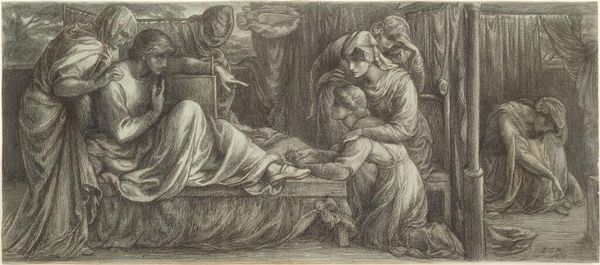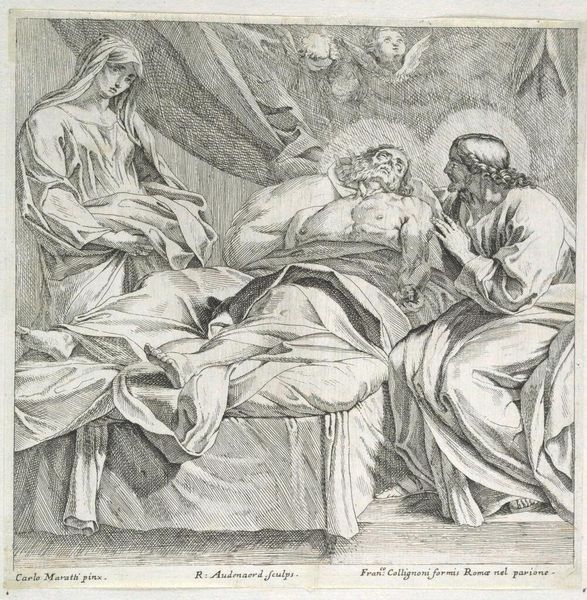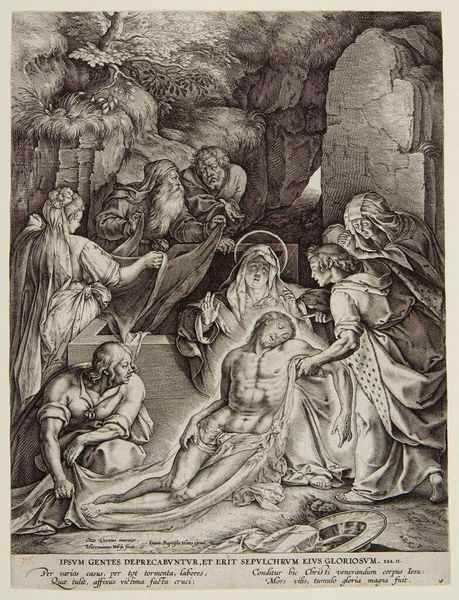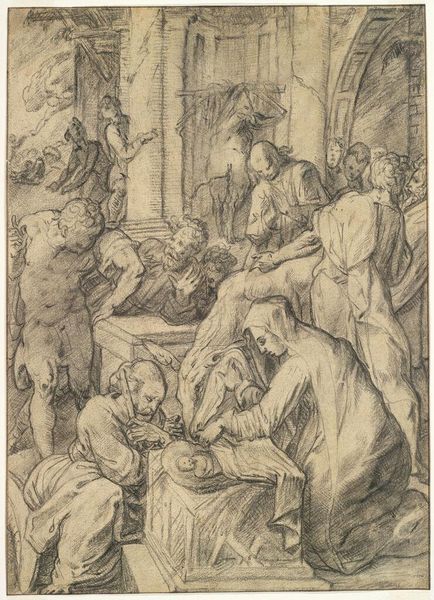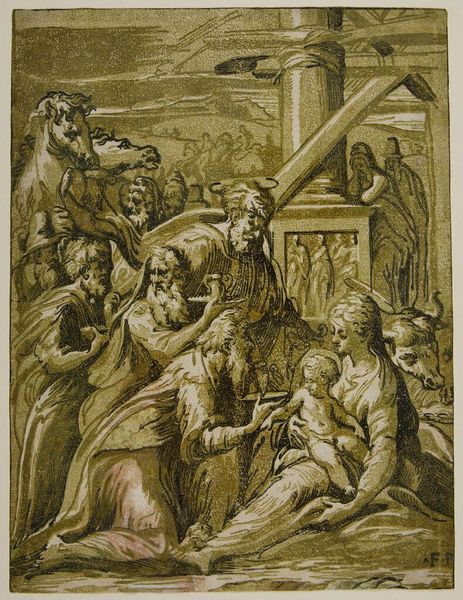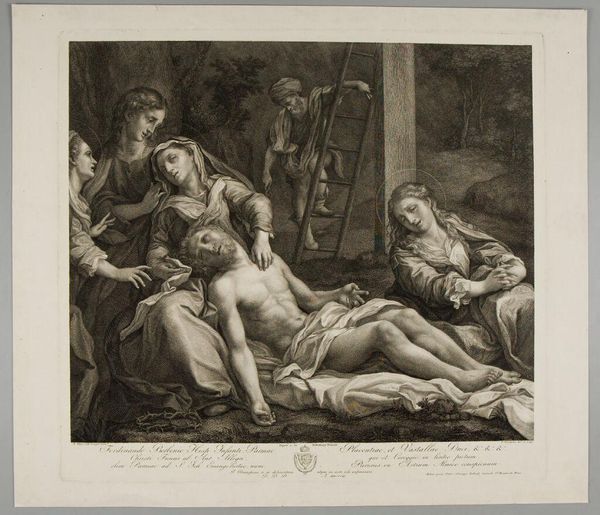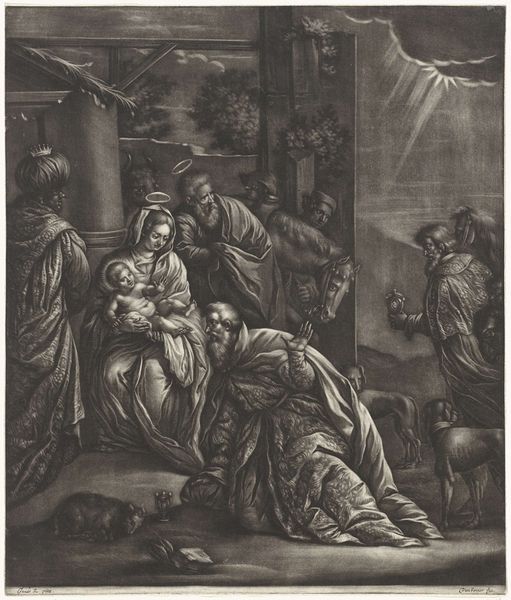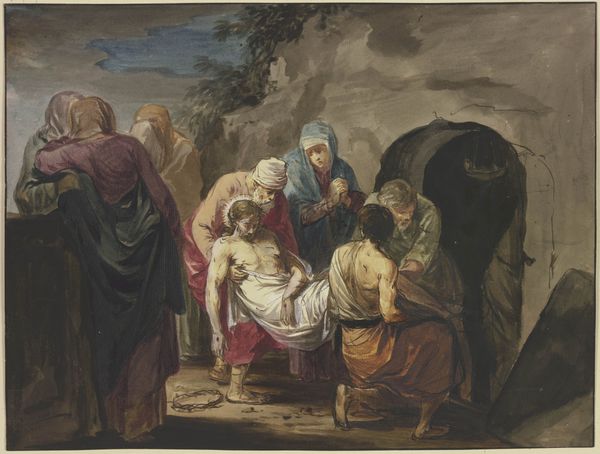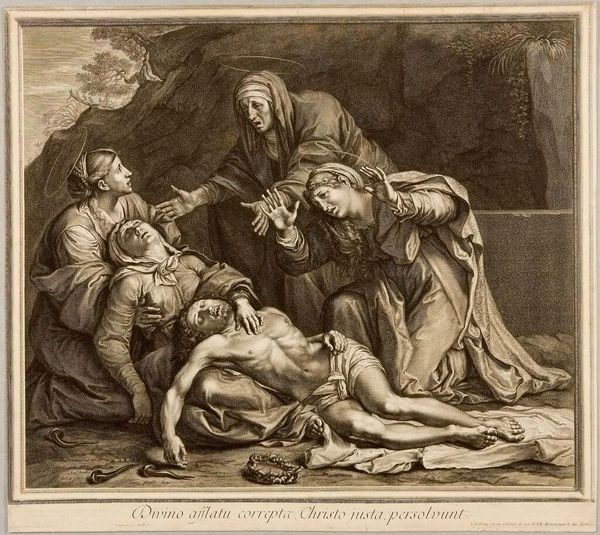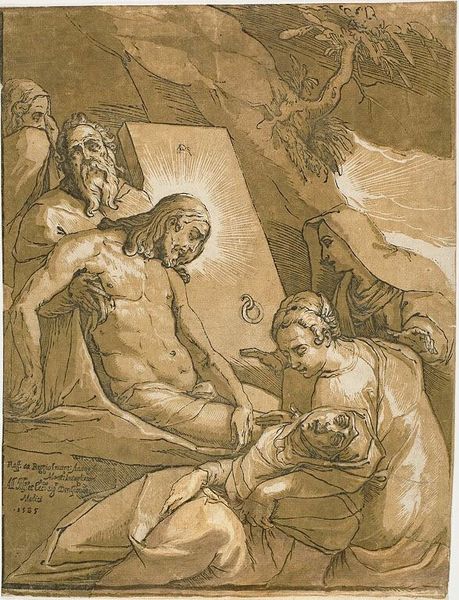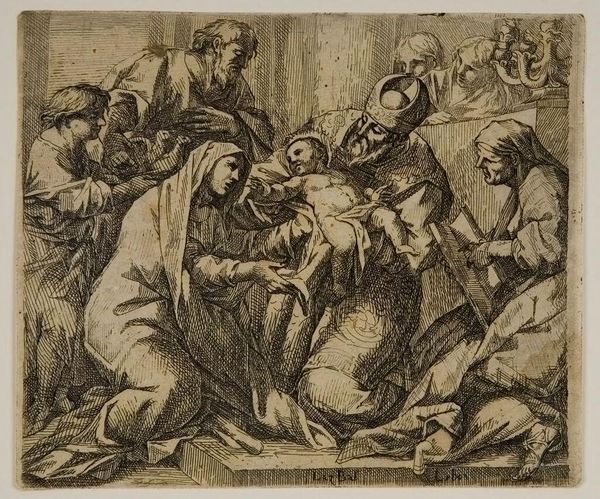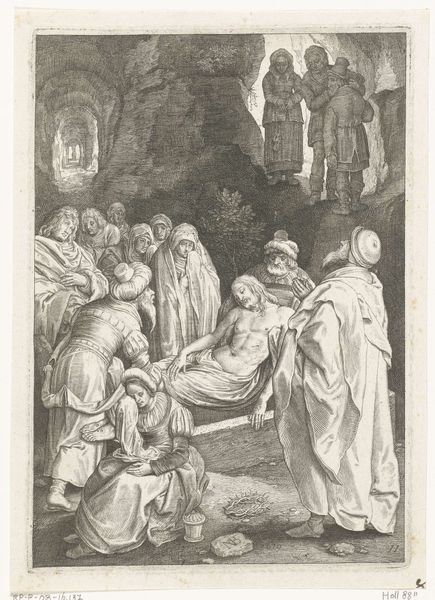
Dimensions: 130 mm (height) x 140 mm (width) (bladmaal)
Curator: Let's spend a few minutes contemplating Carl Bloch’s “Kristi Gravl\u00e6ggelse,” an etching from 1880 currently held at the SMK, the National Gallery of Denmark. Editor: My first impression is of deep sorrow. The etching’s monochrome palette and delicate lines seem to emphasize the vulnerability and finality of the scene. Curator: Indeed. Bloch's choice of depicting Christ’s entombment, a key scene of mourning and transition, carries potent symbolic weight. Death and grief rituals permeate cultures— what do you make of its impact on this figuration of the Passion narrative? Editor: The composition draws the eye directly to the horizontal figure of Christ, starkly illuminated against the darker background, immediately imbuing the form with the full power of symbolic sacrifice. He functions as a vanishing point around which grief spirals and radiates, like spokes on a wheel. It feels as though one is standing within the tomb. Curator: He really did master his medium and knew how to manipulate visual forms. The figures surrounding Christ – look closely and observe them; the textures of their robes, their faces – the repetition of shapes… the hunched shoulders speak to despair. Consider also the closed tomb entrance looming nearby – a stark reminder of death’s finality but also an unconscious harbinger of potential Resurrection. Do you see a Baroque sensibility in his attention to movement and implied drama? Editor: Absolutely, the deep shadows evoke that Baroque dynamism, contrasting so effectively with the realistic treatment of anatomy and fabric, especially in how light falls and pools on Christ’s shrouded body. But there's also something intensely personal at play here. It strikes me, looking at Bloch’s entire body of work, that the figure of Christ always becomes intensely human. Curator: I agree, and consider that etching is often linked with truth seeking: that the barest form carries symbolic authenticity. Here, Bloch is offering his interpretation and allowing space for empathy, despite a tragic inevitability. Editor: In other words, by laying bare the image’s lines in their elemental quality, it invites viewers to access the emotional truth embedded within it? Curator: Precisely. The simplicity amplifies rather than diminishes the sacred narrative, giving form to collective grief and timeless anticipation. Editor: Ultimately, it demonstrates how technical restraint can actually amplify emotional resonance in representational art. It feels as raw and moving as any depiction I’ve encountered.
Comments
No comments
Be the first to comment and join the conversation on the ultimate creative platform.
